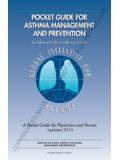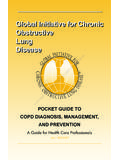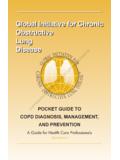Transcription of Your Dermatology Pocket Guide: Common skin …
1 Your Dermatology Pocket guide : Common skin conditions explainedYour Dermatology Pocket guide : Common skin conditions explainedAuthors:Janice Bianchi Independent Medical Education SpecialistBarbara Page Dermatology Liaison Nurse Specialist, NHS FifeSheila Robertson Dermatology Liaison Nurse Specialist, NHS Fife NES 2011 First Published June 201101 The structure and function of the skin 502 Taking a history 903 Examining the skin and describing lesions 1204 Common skin conditions in adults 18 Acne 19 Cellulitis 21 Psoriasis 22 Shingles (herpes zoster)
2 24 Skin cancers 25 Vasculitis 2905 Common skin conditions in children 30 Chicken pox (Varicella) 31 Eczema (atopic) 32 Henoch-Sch nlein purpura 33 Impetigo 34 Impetiginised eczema 35 Miliaria 36 Measles 37 Napkin dermatitis (nappy rash) 38 Rubella (German measles) 3906 Common skin conditions in both adults & children 40 Bites (insect) 41 Eczema herpeticum 42 Pruritus 43 Urticaria (acute)
3 45 Scabies 4607 Practical advice on topical treatments 4808 Glossary 5209 Resources 56 Introduction//////////////////////////// //////////////////////////////////////// //////////////////////////////////////// //////////////////////////////////////// //////////////////////////////////////// //////////////////////////////////////// //////////////////////////////////////// //////////////////////////////////////// /////////////////////////////4 This booklet can be used by any clinician who wishes to develop their knowledge of Common skin conditions.
4 It has been specifically written for nurse practitioners, specialist nurses, physicians or any other clinicians who undertake structured histories using advanced decision-making skills. It will aid in diagnosis - recognising differential diagnosis, formulating prescriptions and assisting in identifying referral pathways if booklet is divided into three parts. Part 1 Part 1 (sections 01-03) starts with a review of the structure and functions of the skin, then takes the practitioner through history taking and describing the characteristics of the presenting skin condition. Part 2In part 2 (sections 04-06), we provide information on the more Common skin conditions, including clinical images, diagnosis and suggested treatment*. There is also advice on practical aspects of coping with the presenting condition for the patient, parent or carer.
5 Finally, there is guidance on when specialist referral is indicated. Part 3In part 3 (sections 07-09) you will find practical advice on emollient and steroid therapy, a glossary of terms, useful websites and a list of reference books for further aim of this booklet is to assist the clinician in managing most of the Common dermatological conditions they are likely to encounter in their clinical practice.* To prescribe the correct dose of suggested treatments, please refer to British National Formulary ( ) or British National Formulary for Children ( )01 Section 01 The structure and function of the skin//////////////////////////////////// //////////////////////////////////////// //////////////////////////////////////// //////////////////////////////////////// //////////////////////////////////////// //////////////////////////////////////// //////////////////////////////////////// //////////////////////////////////////// /////////////////////The structure and function of the skin//////////////////////////////////// //////////////////////////////////////// //////////////////////////////////////// //////////////////////////////////////// //////////////////////////////////////// //////////////////////////////////////// //////////////////////////////////////// //////////////////////////////////////// ////////////////////The thickness of the
6 Skin varies depending on the site, with thicker skin being present on areas of the body that experience friction or wear and tear, such as the soles of the feet and palms of the skin is supported by a layer of fatty tissue, sometimes known as the hypodermis. This fatty area helps to act as a cushion to protect the body and is also important for shaftSweat ductBasal layerRete pegsSebaceous glandArrector pili muscleSweat glandHair follicleHair rootBlood supplyNerveNerve endingAdipose tissueHypodermis(subcutaneousfatty tissue) is essential to have some background knowledge on the normal structure and function of any organ before you consider skin is often referred to as the largest body organ and serves as the main protective barrier against damage to internal tissues from trauma, ultraviolet light, temperature, toxins and bacteria.
7 The skin is also responsible for sensory perception, temperature regulation, production of vitamin D and excretion of waste products. In addition to preventing harmful substances from entering the body, it also controls the loss of vital substances from the body. It is therefore important that the skin remains intact to allow the body to perform these essential skin contains a number of accessory organs which assist in its protective role. As we can see in Fig. 1, it consists of two main layers: the epidermis, or outer layer, and the dermis, which lies beneath the structure and function of the skin//////////////////////////////////// //////////////////////////////////////// //////////////////////////////////////// //////////////////////////////////////// //////////////////////////////////////// //////////////////////////////////////// //////////////////////////////////////// //////////////////////////////////////// ////////////////////The dermis The main function of the dermis is to provide physical support and nutrients to the epidermis.
8 The two layers identified within the dermis are the papillary layer and the reticular layer. Key substances found in the dermis include elastin, fibrillin and collagen (which helps give support and protection), all of which will decrease with dermis also contains nerve endings, sweat glands, sebaceous glands, hair follicles and blood vessels. The papillary dermis contains smaller blood vessels which supply oxygen, elastic fibres and nutrients to the lower nerve endings sense pain, touch, temperature and pressure and are a vital part of the body s protective mechanisms. There are more nerve endings in certain parts of the body, such as the fingertips and epidermis The epidermis (outer layer) contains no blood vessels and is divided into five layers. Cells move from the base of the epidermis up to the surface, changing shape and structure as they go.
9 The epidermis is made up of stratified squamous epithelium or hardened cells which play a role in the skin s protective function. This is referred to as the stratum cells line the hair follicles, sebaceous glands and sweat number of projections which reach down from the epidermis to the dermis can be found at the point at which they join. These are called rete pegs, which help to maintain skin integrity when the skin is under stress. Melanocytes are cells found in the deepest layer of the epidermis. They produce melanin, which helps protect the body from the sun s harmful structure and function of the skin//////////////////////////////////// //////////////////////////////////////// //////////////////////////////////////// //////////////////////////////////////// //////////////////////////////////////// //////////////////////////////////////// //////////////////////////////////////// //////////////////////////////////////// ////////////////////The hypodermis The hypodermis provides support for the dermis and is made up largely of fatty and connective tissue.
10 It is essential for protection of internal structures and also provides (subcutaneousfatty tissue)8 Sweat glands produce sweat, which contains some body waste products, water and salt. Evaporating sweat causes cooling of the body. Sweat from the axilla and groin areas (apocrine glands) is more oily in nature and produces a characteristic odour when digested by the skin glands secrete sebum into hair follicles. Sebum is an oily substance that keeps the skin moist and acts as a barrier against foreign follicles produce the various hair types that can be found around the body, so can affect a person s appearance. Hair is also involved in protecting the body from injury and can improve blood vessels within the dermis are involved in temperature thicker reticular dermis contains dense connective tissue, larger blood vessels, elastic fibres and bundles of collagen arranged in layers.















